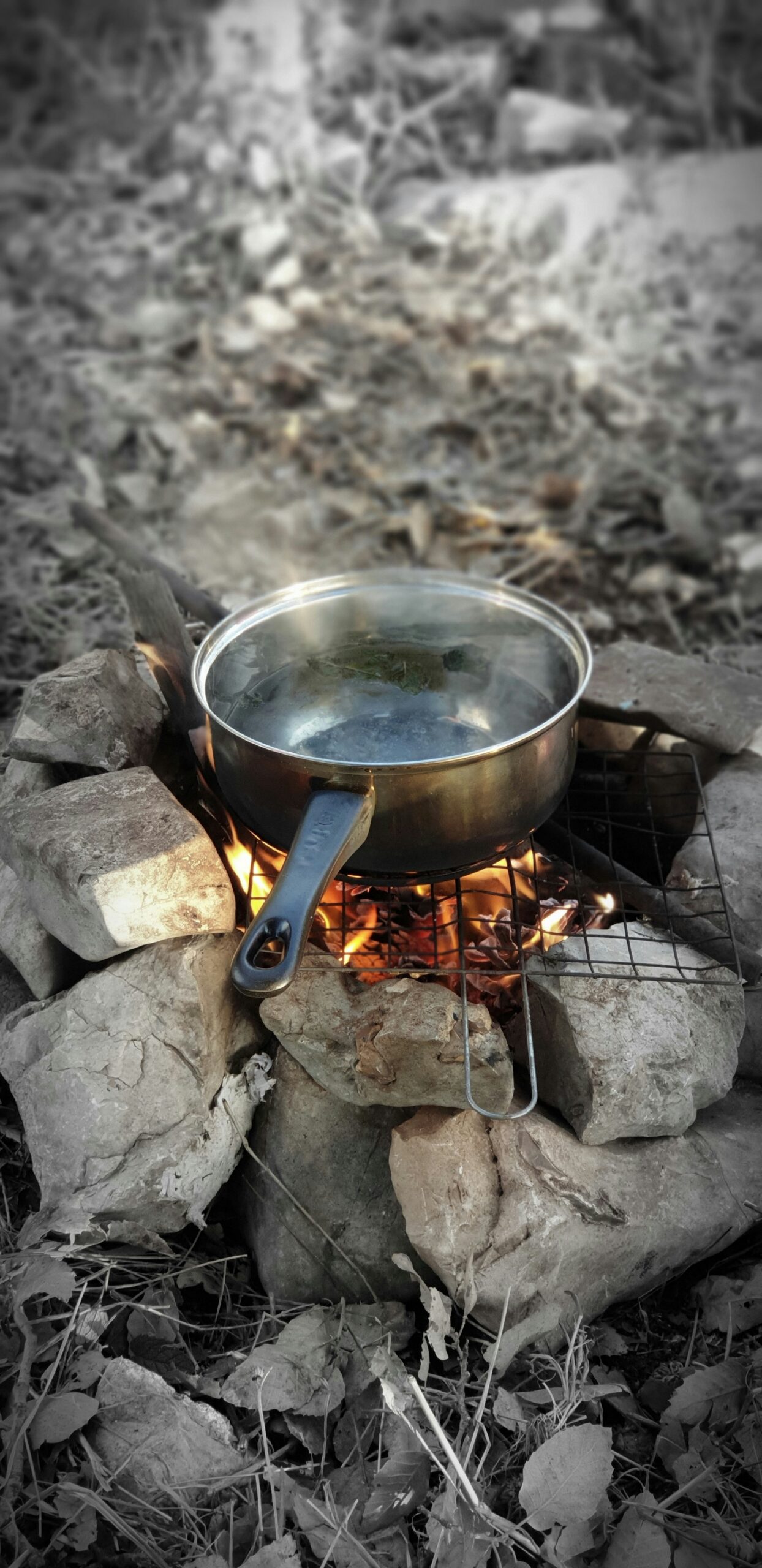Have you ever pondered the necessity of special cooking equipment for emergency food supplies? When preparing for unexpected situations, it’s crucial to consider all aspects of your emergency food strategy. After all, having a stash of long-shelf-life food is just one part of the equation. How you prepare and consume these foods is equally important, especially when under duress and without regular kitchen conveniences.
Understanding Emergency Food Supplies
Emergency food supplies usually comprise non-perishable items designed to sustain you during crises or power outages. These can range from canned goods to freeze-dried meals that have an extended shelf life. The idea is to have access to nutrition when grocery stores may be inaccessible or when you’re cut off from reliable food sources.
Types of Emergency Foods
Different types of emergency food supplies cater to varied needs and preparation methods. Here’s a look at some common categories:
-
Canned Goods: These are typically ready-to-eat foods requiring minimal heating. Think soups, vegetables, fruits, and proteins like tuna or chicken.
-
Freeze-Dried Meals: These often come in sealed pouches and require water to rehydrate. They’re popular for hiking and camping due to their lightweight and compact nature.
-
Dehydrated Foods: Similar to freeze-dried meals but retain a bit more weight and require water for rehydration.
-
MREs (Meals Ready-to-Eat): Initially designed for military use, these meals are fully cooked and can be eaten hot or cold.
-
Bulk Dry Goods: Items like rice, pasta, grains, and legumes, are staples that can be stored for long periods.
Why Cooking Equipment Matters
While some emergency foods can be consumed as-is, others may require some form of cooking or heating. Without the correct equipment, you might find it difficult to enjoy or adequately prepare these meals, potentially reducing their nutritional value or making them unpalatable.
Traditional vs. Emergency Cooking
Under normal circumstances, you might use a stove, oven, microwave, or electric kettle. In emergencies, you might not have access to electricity or gas. This is where understanding alternative equipment becomes essential.
Common Cooking Challenges in Emergencies:
-
Limited Power: Power outages can eliminate access to any electrically powered cooking appliances.
-
No Gas Supply: Without a gas supply, traditional stovetops and ovens are useless.
-
Outdoor Limitations: When outdoors or away from urban areas, you might lack even basic kitchen appliances.

Essential Emergency Cooking Equipment
Choosing the right equipment can significantly impact your ability to prepare emergency food effectively. Let’s explore some options that could work across various scenarios.
Portable Stoves
Portable stoves are crucial, especially in extended emergency situations. They are usually lightweight and easy to operate. Some popular types include:
-
Propane Stoves: These are easy to use and provide a consistent heat source. Ensure you have enough propane canisters available.
-
Butane Stoves: Similar to propane but typically used in smaller forms, making them more portable.
-
Multi-Fuel Camp Stoves: These stoves can burn different kinds of fuel, such as white gas, kerosene, or unleaded gasoline, offering versatility.
Alternative Fuel Sources
Having alternative fuel sources can be a game-changer. Options like solar, alcohol, and even twigs or wood can serve well when typical fuels run short.
-
Solar Ovens: Use the sun’s energy to cook food. They work well for slow-cooked meals given sufficient sunlight.
-
Alcohol Stoves: Compact and simple, these stoves burn alcohol as fuel and are ideal for boiling water or cooking small meals.
-
Wood-Burning Stoves: If you have access to wood, these stoves can be effective for both heating and cooking.
Essential Accessories
Certain accessories can make emergency meal prep more manageable, ensuring safety and efficiency:
-
Portable Fire Starter: Matches, lighters, or flint can help in getting your fire started.
-
Cooking Utensils: Lightweight pots and pans, as well as essential utensils like spoons, forks, and knives.
-
Collapsible Cookware: Often made from silicone or other heat-resistant materials, these are excellent to save space.
Preparing Without Traditional Cooking Equipment
If you find yourself without traditional cooking equipment, don’t fret. There are multiple ways to prepare food, even under challenging circumstances. Creativity and flexibility are your best allies.
Cold Meals
Not all meals need to be cooked. Canned goods like beans, chili, or even fish can be consumed cold. Here’s how you can make the best out of them:
-
Simple Meal Combinations: Mix canned proteins and beans for a nutritious meal.
-
Hydrating Freeze-Dried Foods: Use cold water instead of hot for rehydration. While the process is slower, it is still effective.
DIY Cooking Methods
From homemade ovens to innovative techniques, unorthodox methods can see you through a pinch.
-
DIY Solar Oven: Create a simple oven using cardboard, aluminum foil, and glass. Though it takes longer, it’s effective.
-
Tin Can Stove: Transform a large tin can and common supplies into a makeshift stove using simple designs available online.
What About Storage?
After cooking, storing leftovers properly is important for safety and minimizing waste, especially when resources are scarce.
-
Utilizing Coolers: Even without ice, coolers can help maintain food at safe temperatures for short durations.
-
Using Vacuum Sealers: If accessible, vacuum sealing can prolong shelf life.
-
Mason Jars and Airtight Containers: Effective for keeping critters out and preserving the freshness of your food.

Nutritional Considerations
Unlocking the potential of emergency foods goes beyond mere survival. Here’s how to maintain a balanced diet:
Balancing Nutrients
Carbohydrates provide quick energy, while proteins are crucial for muscle maintenance and repair. Don’t forget about vitamins and minerals found in canned fruits and vegetables.
-
Protein Sources: Canned meat, nuts, seeds, and legumes.
-
Carbohydrate Options: Dry goods such as pasta, rice, and oats.
-
Essential Vitamins: Incorporate canned veggies and fruits to ensure adequate intake.
Avoiding Nutritional Pitfalls
Many emergency foods can be high in sodium and preservatives. You’re likely to find high levels in canned soups and pre-packaged meals.
-
Read Labels: Always check for nutritional content and watch out for excessive sodium.
-
Hydration: Intake of water and other fluids is vital, especially with dehydrated foods.
The Psychological Aspect of Emergency Meal Preparation
Eating isn’t only about fulfilling physical needs; it’s also about comfort, especially in stressful situations.
Boosting Morale with Food
A hot meal can be a morale booster. Think of small ways to enhance your meals, such as seasoning packets or hot sauce minis.
-
Comfort Foods: If possible, include some snacks or sweets. These can provide not only a energy spike but also a mental lift.
-
Sharing Meals: If fortunate enough to be with others, sharing food can foster camaraderie and a sense of normalcy.

Final Thoughts on Emergency Preparedness
Revisiting the question—do emergency food supplies require special cooking equipment? The short answer is yes and no. While some emergency foods are fine cold, having access to alternative cooking methods can significantly improve your experience when using these supplies. Ensuring you have a balanced approach to both food and equipment will make your emergency preparedness plan robust.
Action Steps for Preparedness:
-
Evaluate Your Needs: Consider how many will be using the supplies and for how long.
-
Diversify Your Supplies: Acquire a mix of food types and cooking equipment.
-
Practice: Familiarize yourself with equipment before emergencies occur.
-
Regular Checks: Rotate your food stock and test your equipment periodically to ensure everything is in working order.
By focusing on both the food and the tools needed to prepare it, you can build a foundation that can sustain you through unforeseen trials.

